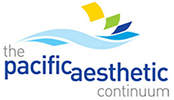
Dr. Jack Griffin
Sometimes an “aesthetic case” has nothing to do with a bunch of veneers, sometimes it’s maintaining remaining teeth to preserve chewing and quality of life. In this case, a cancer survivor, there are a variety of oral health challenges, including xerostomia. After radiation and chemotherapy, there exists insufficient saliva to neutralize acids and support the natural remineralization process, which often results in root decay (Fig 1).

Figure 1

Figure 2
The goal of the case was to maintain lower teeth and keep at least the level of mastication she currently had with an upper full denture and a lower partial. Lower teeth were prepped except one central incisor (Fig 2). The chances of recurrent decay with traditional bonding and composites are high so my first step was to thoroughly remove caries with the help of a caries indicator (Fig 3).

Figure 3

Figure 4
After the decay was removed, I followed a total etch protocol and built up the crown preparations using ACTIVA BioACTIVE-RESTORATIVE (Fig 4). This bioactive luting material releases and recharges fluoride, phosphate, and calcium, and participates in an ionic exchange that promotes an environment of tissue health. The preps were finished for all teeth but one which allows copying of the bite without losing vertical relations (Fig 5). The bite registration was then taken with Futar (Kettenbach) (Fig 6). The remaining tooth was prepped and impressions taken (Fig 7-8).

Figure 5

Figure 6

Figure 7

Figure 8
Monolithic zirconia restorations were made by The Pacific Aesthetic Laboratory Group (Fig 9). They were tried in and all seven restorations cemented at the same time with ACTIVA BioACTIVE-CEMENT and cleaned up (Fig 10). The new generation of regenerative self-adhesive cements are easy to clean up, have good aesthetics, and reduce the chance of recurrent decay by releasing ions that stimulate tooth health (Fig 11).

Figure 9

Figure 10

Figure 11
A new lower all acrylic partial was made and a reline of the upper denture completed. The result is restorations that are aesthetic, highly functional, and allow tissue health (Fig 12-13). An advantage of zirconia near the gingiva in combination with regenerative cementation provide a decreased chance of recurrent decay even in tough to restore areas like root surfaces. Despite the guarded cancer prognosis, the laboratory and I have done our part to allow as natural a result as possible given the circumstances.

Figure 12

Figure 13
If you have questions about my article or if you would like to send a case, please contact the Pacific Aesthetic Laboratory Group at www.pacificaestheticdentalstudio.com, Gary Vaughn, CDT, CTO, (888) 461-3331, or via email [email protected].
